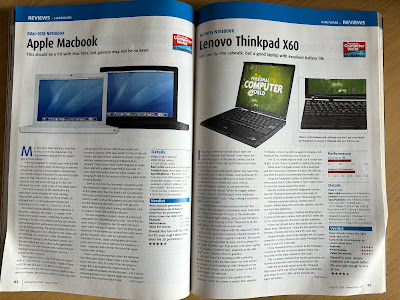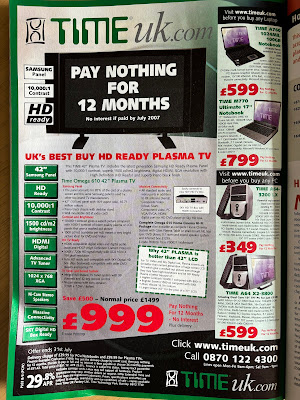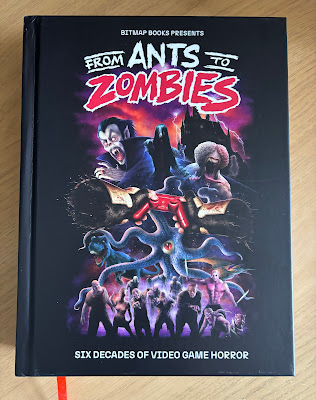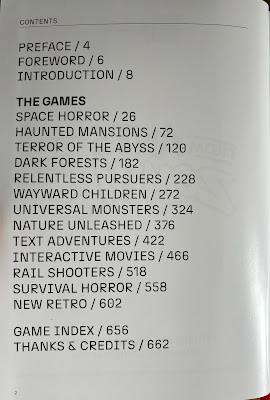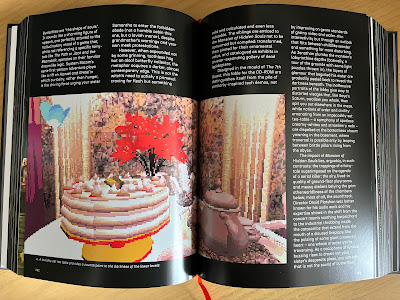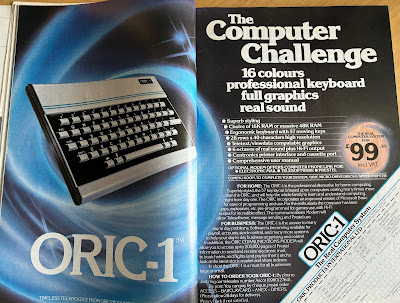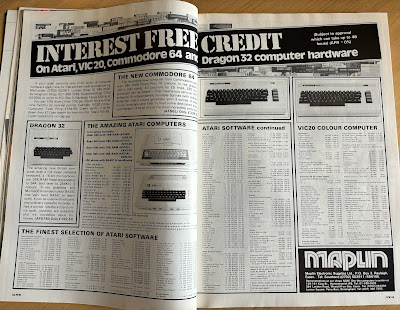Whoa! Whoa!!! Whoa, I said!!! I know, it's a 21st Century magazine, but we're talking 2006, so that's retro in my eyes, at least for the purpose of this blog.
So yes, Personal Computer World in 2006, and the times they had a changed since the heady days of the 1990's. It's a much more svelte publication at just under 200 pages. Gone were the reams dedicated to advertising. Oh, there were still ads, but far fewer. Similarly, whereas once you might have had two dozen entrants into a PC group test, by 2006, the cover article states only seven. We'll get to that in a bit though...
Good news everyone! Beta 2 of Vista was available for download, alongside a new version of Office. Both were ready to hit consumers in January 2007, with the OS doing some serious battering all on its own. OK, it wasn't terrible, it just had the reputation of XP to live up to and... well, yes...
Microsoft were promising "lighter and cheaper Origamis". If you aren't familiar with the concept, these were a hybrid media player cum ultra-mobile PC. The entire point was a tad flawed - compromised ergonomics, high prices, and the dual advent of tablets and the netbook did for the idea. At the other end of the (cough) portable segment was Dell's XPS-M2010 - an 8kg 20-inch chonk. It had its appeal but it stretched the definition of portable to the extreme for contemporary standards.
The first feature details ways of trying to silence your PC - and although not as complicated as, say, making a nuclear submarine a hole in the water, there were a surprising amount of options to get the decibels down. Following that is a look at Boot Camp, a superbly useful option for Mac users at the time. Pieces on the Windows Registry and the true cost of wireless data prove worthy of inclusion for those interested in such things, as well as raising your humble scribe's eyebrows at the cost per megabyte punters would have faced. At the time of this issue, I was working at Phones 4u (don't hate me, I was admin, not sales!), and whilst there was some interest in "smart-er" phones, it was still early days. That being said, I often yearn for the time when handsets had style and character rather than the "beige" of phone design that rules today: the slab. Not the Nokia 7280 though. That "phone" had the dubious claim to fame of having a 100% return rate at our store with bloody good reason!
It's the reviews section next, and Mesh leads with an Athlon64 FX-62 powered gaming colossus. 2 (count 'em) gigs of RAM, 500GB of storage and twin Nvidia Geforce 7900 GT cards in SLI (Scalable Link Interface) configuration. This was serious stuff, and yes, it could run Far Cry - 86fps! Of course, at £1,999, you'd expect high performance and it's only the looming promise of Intel's Core 2 Duo chips that reins in the enthusiasm.
Evesham have an AMD Turion 64 X 2 powered laptop for the much more sensible price of £799. It's a tad slow (blame the graphics), and with an average battery life (3h 19m), yet once again, the Core 2 Duo range raises questions over value.
The next page has Apple's Macbook and it's the the same model I used as a daily driver until about 2011. £749 for 512MB of RAM, 80GB hard drive and, as the review attests, the only downside was the poor 3D performance. I still wish I had that lappy! On the other page, Lenovo were showing off their Thinkpad X60. £1,360 got you an Intel Core Due T2400, 512MB of memory and 60GB of storage. Although lacking an optical drive (and possibly another half gig of memory for that price), it was the five and a half hour DVD playing battery life that astounded, reaching a heady ten (10!) hours in light use. Given the tech of the time, that was superb, and the best PCW had seen up until that point.
The big group test is for £899 dual-core PC, with a septet of companies offering machines. Of those seven, only a couple are still extant. Dell wins this one, but even the lowest scoring option (the Cube 24/7) wasn't a terrible deal. In other words, any of these machines would have suited.
A second group test is the cover star - dual graphics POWER!!!!! It wasn't a terrible idea for the time, but the advance of technology and the sheer cost of a Crossfire (AMD) or SLI (Nvidia) set up meant that it never truly caught on. The extra faff and hassle just wasn't worth it, and whilst anywhere between a 50 and 94% improvement was on offer, the market wasn't really suited to spending £400 on an extra GPU. Oh, how innocent they were...
The usual Business section (complied by Alan Stevens) has goodies for the seriously employed among us, and Hands On (edited by Kelvyn Taylor) has a wide array of hints, tips and guides for the dozen sections that comprises it. A buyers guide takes us to the cover disc section (MS Office Professional Plus Beta 2, no less), before the back page gives us the Flashback column - three issues are covered, the respective August editions for 2001, 1991 and 1981.
And now for the commercials:
Dell occupied their traditional inside front cover, where some of their prices now seem ridiculously low. A Pentium 4 with half a gig of RAM, 80GB of hard drive storage and a 17-inch monitor for £299 ex VAT! That's £411 inclusive with delivery. For a basic machine, what more could you want, except maybe doubling the memory.
Mesh had their range of laptops on show and not one of them cost more than £1,000 inclusive. It has to be understood that these machines were in no way as portable as many laptops are considered today, but even so, they could be moved about with relative ease as long as you had the power adaptor to hand.
Evesham Technology's looked all cool and modern, but as fate would turn out, they were a year away from trouble. At that point though, they were still a good source of kit.
An insert from Microsoft extolled the benefits of Windows XP Media Centre Edition, and a couple of ads from Mesh and PC World for suitable machines. To be honest, they weren't worth the cost, but another fad of getting the computer and television to sit nicely together.
Ah! Here's PC Specialist! Still going now, in 2006 they catered for a whole gamut of users - and that gaming rig, although £1,308 VAT inclusive, looked great on paper. Compare that to the price of a top of the range GPU (alone) now!
Morgan Computers had a range of goods on offer, but nothing that stood out, whereas Timeuk(dotcom) were busy trying to flog new fangled flat screen televisions as well as PC's. Not an HD TV (it only offered a 1024x768 resolution), it promised to be HD ready. Readers may recall the need when shopping for a new gogglebox at the time of being aware that just seeing the letters H and D was not enough to guarantee the spec.
Sterling XS were another refurb box shifter, and yes, I'd have snatched that Panasonic Toughbook CF-27 without a second thought given the opportunity again. The same impulse could also be directed at those Thinkpad models as well. At the time, however, I had my heart set on a shiny Macbook, so there you go.
Last of all, and suitably on the back page, an ad from Sony for their VGX-XL 100 Media PC. Nope, no idea why the crappy name for a consumer focused product, and even the dog is unimpressed. I can imagine him thinking "Why have you bought that, Dave, you absolute plum?"
So that was PCW in mid-2006. A magazine that still had a place in the world, even if that world had changed massively since the halcyon days of the previous decade. Next time, we'll be back in the far more comfortable confines of the DOS era.






